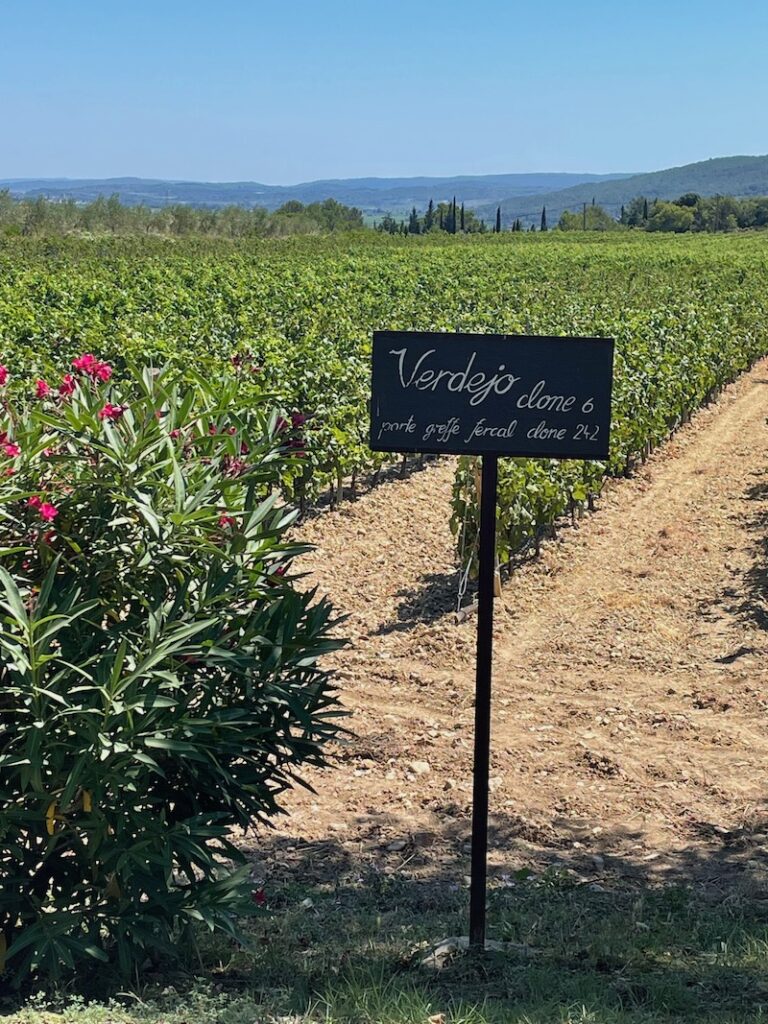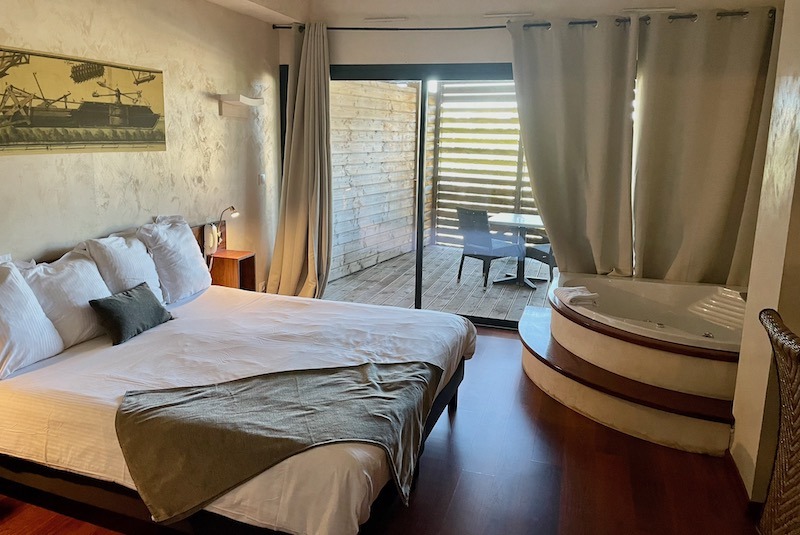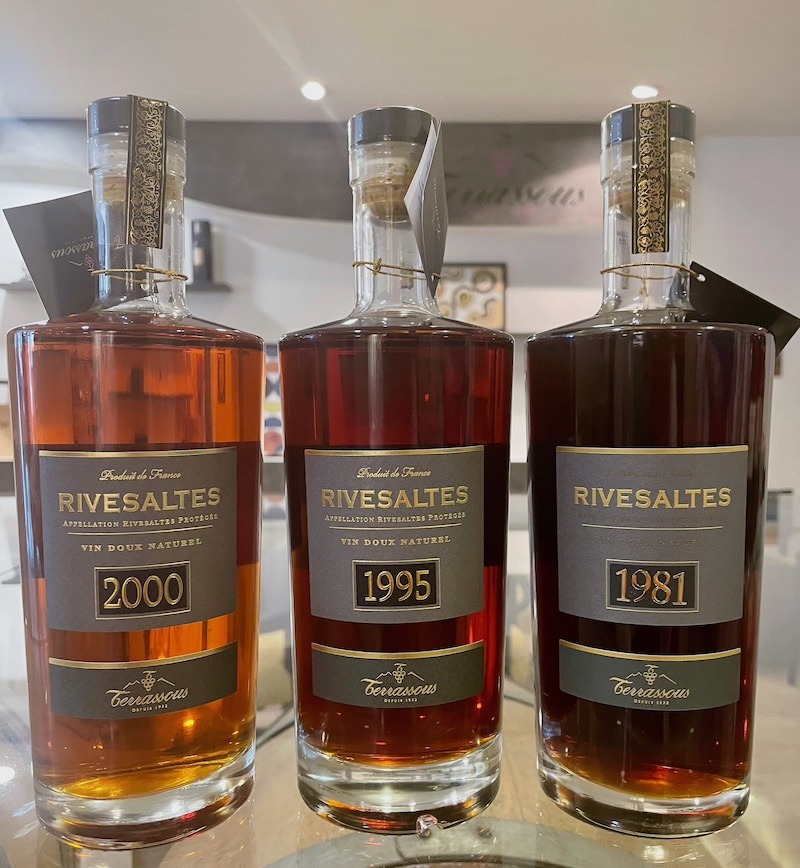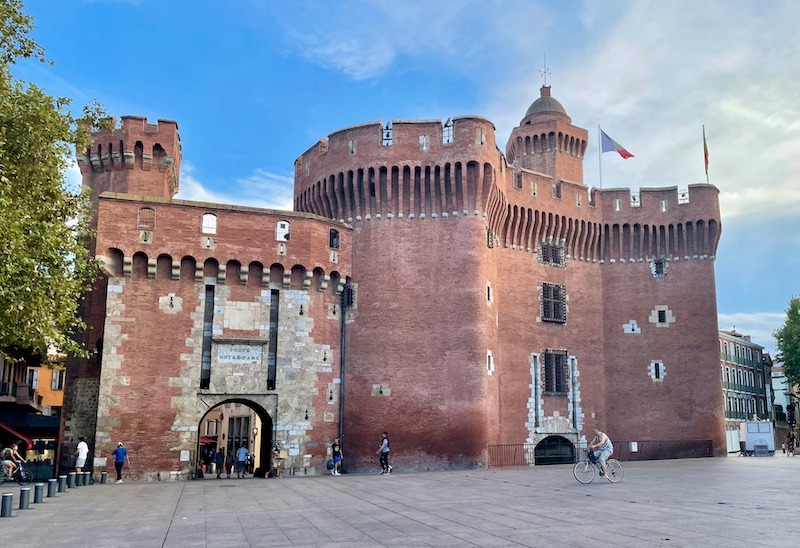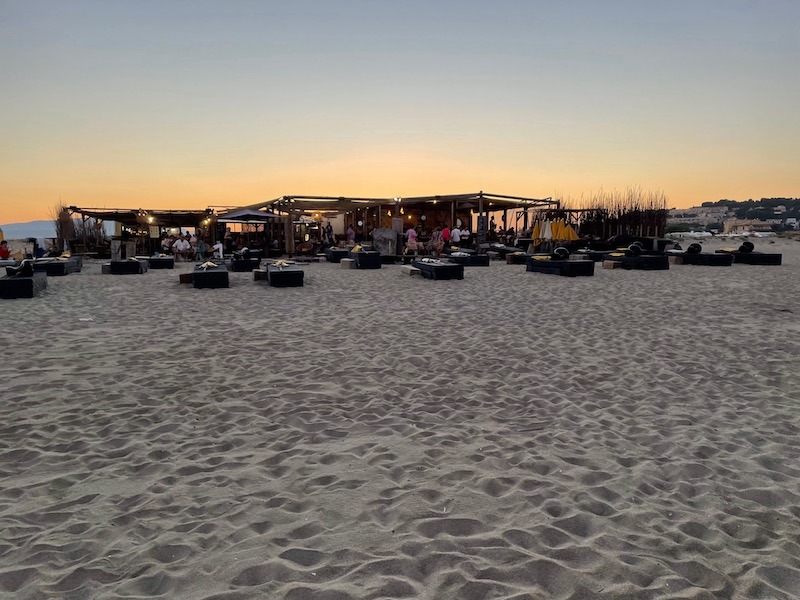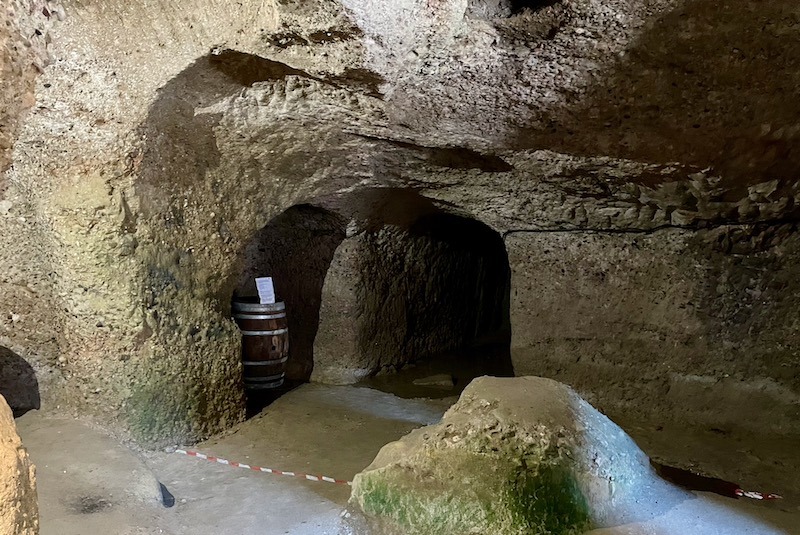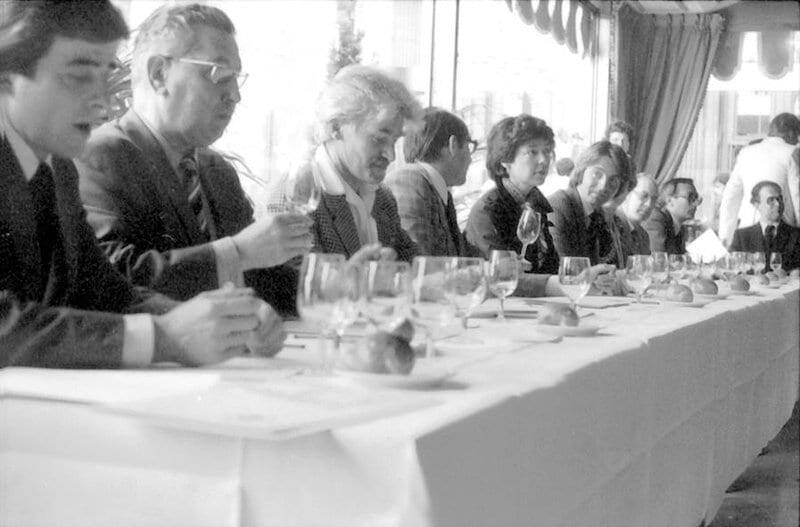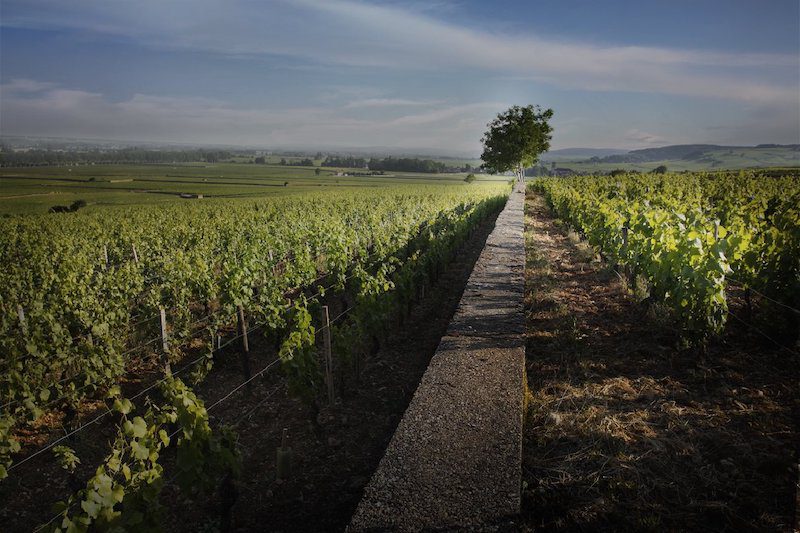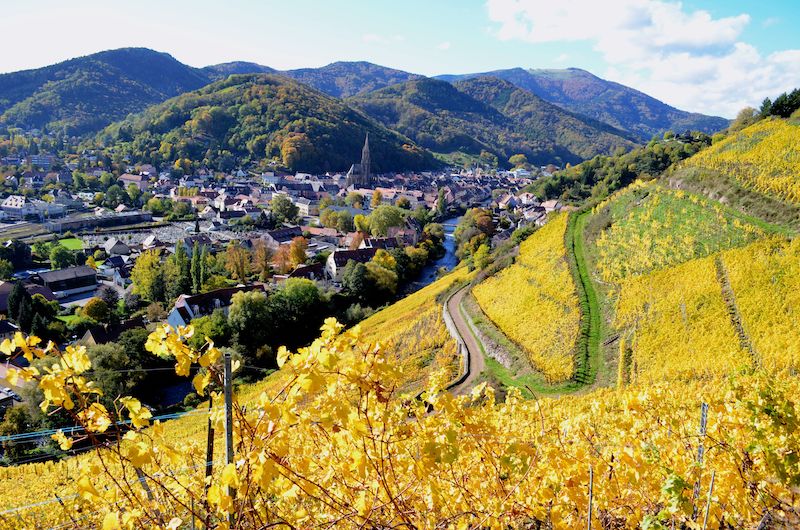An insider guide to the history of winemaking in France’s famed regions of Languedoc and Roussillon. The best wineries to visit, where to stay—and what to do and eat.
In the South of France, where the Mediterranean Sea meets the border of Spain, lies the beautiful Languedoc and Roussillon wine regions. A drive along the roads of the two regions that sit side by side reveals infinite opportunities to take in the sites of endless vineyards, ancient abbeys and castles, and—if you’re there at the right time of year—fields and fields of cheerful sunflowers.
While the two regions – Languedoc and Roussillon – are frequently referred to as one, they are separate and their influences differ. The area that is Roussillon, along the Spanish border belonged to Spain until the 17th century, and Spanish and Catalan culture still influence the culture and the wines. The culture of the larger Languedoc— where 90% of the wine from the two regions is produced — is typically French.
Where ARE Languedoc AND Roussillon?
The wine regions are in Southern France. Roussillon begins at the Southeastern border of Spain and runs east into Languedoc along the Mediterranean Sea up to Provence. The Languedoc makes up 90% of the region. Combined, the two separate regions make up France’s largest wine producing region; about a quarter of all the vines in France are planted in Languedoc and Roussillon. Major cities found in the two regions include Montpellier, Nimes, Narbonne, Sete and Perpignan.
A Brief History of Winemaking in Languedoc AND Roussillon
The history of wine in the region dates to the 5th century B.C. when the Greeks planted vines in what is now southern France. But winemaking hasn’t always been easy going in the region Toward the end of the first century A.D., the region’s vines fell victim to politics when Roman Emperor Domitian ordered them uprooted and required wine to be imported from the regions surrounding Rome. It wasn’t until the Middle Ages that monks began to bring back vineyards.
In the late 1800s, the phylloxera bug that decimated many of Europe’s vineyards took its toll in the wine regions of southern France. However, it’s Jules Emile Planchot, a botanist from Languedoc, the wine world must thank for the solution to phylloxera. He was the first to graft European vines onto phylloxera-resistant American rootstock.
Today, Languedoc is one of the leaders in organic, biodynamic and sustainable wine production. The climate and terroir have a natural advantage. The region is hot and dry and blessed with winds that blow an average of 200 days each year and whisk away disease pressures. The wines coming from both Languedoc and Roussillon are quality, and both regions welcomes tourists who want to experience the wines, the culture, and the history of this picturesque part of southern France.
Terroir & Grapes OF Languedoc & Roussillon
Throughout Languedoc and Roussillon, you’ll find wineries that focus on organic, biodynamic and sustainable wine production. The climate and terroir have a natural advantage – it is hot and dry and blessed with winds that blow an average of 200 days each year and whisk away disease pressures.
Grapes of the Languedoc and Roussillon
The two regions are so well-known for the red blends of Grenache, Syrah, and Mouvédre that the term GSM blend is known by wine drinkers around the world. In addition to those three well-known grapes, these are the top grapes grown in the southern France regions that make still wines, including many of the sweet wines known as Vin Doux Naturel.
WHITE WINE GRAPES
- Bourboulenc
- Grenache Blanc
- Maccabeu
- Marsanne
- Mauzac
- Picpoul
- Roussanne
Languedoc is also known for the sparkling wine Crémant de Limoux made from primarily from Chardonnay and Chenin and Blanquette de Limoux, believed to be the original sparkling wine, made from Mauzac.
MUST SEE Wineries IN LANGUEDOC
Although the Languedoc is better known for its red wines, the region makes beautiful white wines, too. One of the top wineries in Languedoc to experience the best of both is the historical Château St Martin de la Garrigue on a 420-acre estate with 170 acres of vineyards. You can stay in the castle (or get married in it), or just stop by to taste their wide array of wines. They produce traditional white and red blends and lively South of France rosés. They’re particularly known for their Picpoul de Pinet and vinify it into a still and a sparkling wine.
Fall in love with the sparkling wines of Limoux—the region that lays claim to discovering sparkling wine—at Maison Antech. Here you can try various expressions of sparkling Limoux wines including Blanquette de Limoux Méthode Ancestrale made from 100% Mazak and the more modern Crémant de Limoux made from Chardonnay, Chenin, and Mazak.
Located in Corbairs, the largest AOC of the region—and the fourth largest in all of France—Château Peach Latt has made wines since the early 1900s, and in 1991 the winery became all organic. A predominantly red wine producer, Pech Latt produces the classic GSM blend, plus several Syrah-based red blends, showcasing the regions red wines, which is it best known for.
The South of France is the mother ship of rosé wines, and at Domain Royal de Jarras—the northernmost winery of these recommendations—rosé—four different cuvees— is all they do. Located on an island where flamingos and white horses roam free, the vineyards are farmed organically, and the utmost care is taken for the nature surrounding the winery. The winery is a must visit for both its wine and its unusual and picturesque surroundings.
WHERE TO Stay IN Languedoc
In addition to Château St Martin de la Garrigue’s castle, these two hotels are welcoming places to stay in Languedoc.
Ile du Gua Suites is in Narbonne, a central location for visiting the wineries of Languedoc. The hotel’s rooms have jacuzzi baths and private wooden terraces that overlook the gardens. There’s also a restaurant and spacious outdoor decks for guests to use.
If you’ve ever wanted to stay in a mid-16th century castle, complete with towers where you can imagine Rapunzel is waiting to let down her hair, Château des Ducs de Joyeuse in Couiza is a just short distance from Limoux. Classified as a historic monument, the hotel has a restaurant with indoor or outdoor courtyard seating, an outdoor heated swimming pool, tennis courts, and babysitting services.
MUST SEE Wineries IN Roussillon
Situated in a 15th-century Catalan stone farmhouse, Domaine LaFage is located on the road that takes you from Perpignan to the Mediterranean coast. With a focus on sustainability and biodiversity, La Fage produces a range of wines that express all that Roussillon has to offer. The winery is also focused on tourism and offers introductory tasting workshops. Wines not to miss: LaFage Nicholas, a 100% Grenache red and Saint-Roch Old Vines Rosé
You can’t leave Roussillon without trying a Rivesaltes Vin Doux Natural, and Terrassous is the place to experience the natural sweet wine that can be aged up to 40 years. Make sure to try one of the older vintages that start to get jammy and figgy.
WHERE TO STAY IN Roussillon
Perpignan is a central location for a stay in Roussillon, and it’s a vibrant former fortress city with much to do and see. The Hotel Mercure Centre Perpignan is in a convenient location to walk to the city’s sites including the beautiful Perpignan Cathedral, shops located in old stone buildings, restaurants, and the outdoor market. If a luxury stay with a spa is what you’re looking for La Villa Duflot is nearby.
Things To Do Besides Wine Tasting in Languedoc AND Roussillon
Dine on the beach at Leucate Plage at Biquet. Open from May to mid-September, this open air restaurant and bar right on the beach is eclectically decorated with traditional chairs and soft couches. The seafood is fresh, the views of the sunset are sublime, and the atmosphere is festive.
Shop at an open air market. Throughout the region there are daily open air markets where fresh food, baguettes, artisanal goods, and souvenirs abound. If you take nothing else home with you from your trip, you must take home a box of fleur de sel, harvested from the salt fields of Gruissan along the Mediterranean.
Visit the Benedectine Abbey Saint Hillaire, the home of Limoux sparkling wines. Learn the story of the monk who was first to discover sparkling wine and its mention in a 1544 manuscript. Stand in the cellar where it’s believed that wine spontaneously fermented.
Located by the Corbières mountain range, the Mayronnes Sculpture Trail combines a well-marked 3.7 mile hike with art. Hikers come across about 30 works of art contemporary art that blend beautifully in the natural setting.
Children as young as two-years-old will love Argeles Adventure, located about 20 minutes from Perpignan. The adventure park combines nature, discovery, and plenty of bridges, swings, zip lines, and Tarzan jumps to make sure the kids sleep well that night.
About 45 minutes north of Narbonne, Fabrikus World is the largest amusement park in the South of France. With fast, looping roller coasters, a haunted house, and several attractions that launch riders high into the air, this is the place to go if you have teens in tow on your trip to Languedoc. The whole family can enjoy Rio Bravo, a water rise with rapids and waterfalls.
Take in the ancient history of Nîmes. Its origins go back to the 6th century BC. There’s much to take in, but perhaps the most awe-inspiring vision is the Arena of Nimes, a first-century Roman amphitheater that’s still used today for concerts. Don’t miss the Musée de la Romanité, an interactive museum that’s dedicated to the history of Nîimes.



